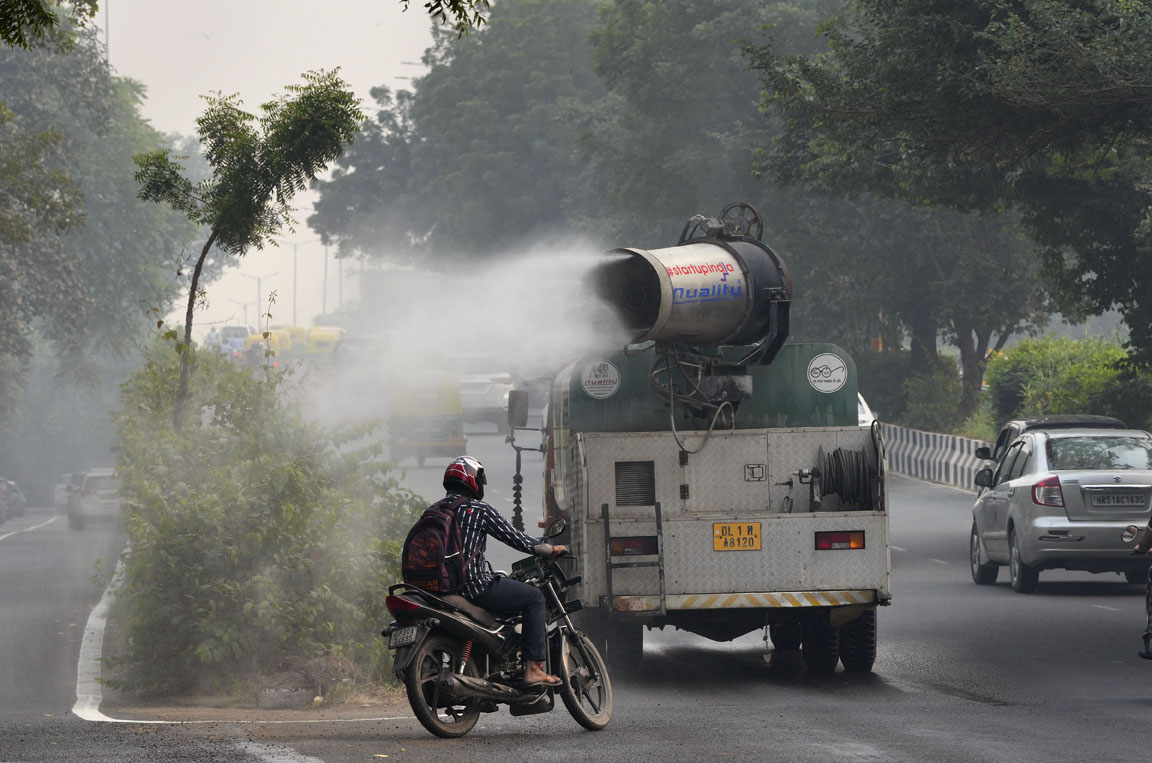Published on Nov 4, 2022
By PTI
Share

New Delhi, Nov. 3 (PTI): As Delhi stared at a public health emergency, a central government panel on Thursday directed authorities to ban the plying of four-wheeled diesel light motor vehicles in the city and adjoining NCR districts and the entry of trucks into the capital as part of anti-pollution measures under the final stage of the Graded Response Action Plan.
However, BS-VI vehicles and those used for essential and emergency services are exempted, according to an order issued by the Commission for Air Quality Management (CAQM).
Delhi Environment Minister Gopal Rai has convened a high-level meeting on Friday to discuss the implementation of the curbs under GRAP's stage IV.
The order stated that the state government may take a call on the closure of educational institutions, non-emergency commercial activities and plying of vehicles on odd-even basis.
The central and state governments may decide on permitting work from home.
"As per the forecast, the AQI in Delhi is likely to be in the 'severe+/severe' category in the next couple of days owing to calm winds and stable atmospheric conditions. Therefore, in an effort to prevent further deterioration of air quality, the GRAP Sub-Committee decided that all actions as envisaged under Stage IV of GRAP be implemented in right earnest by all agencies concerned," the CAQM order read.
"Ban on plying of 4-wheeler diesel LMVs in NCT of Delhi and Districts of NCR bordering Delhi, except BS-VI vehicles and vehicles used for essential/emergency services," it said.
The CAQM also ordered a ban on Delhi-registered diesel-run medium and heavy goods vehicles in the capital. Those carrying essential commodities and providing essential services are exempted.
The entry of trucks other than electric and CNG ones in Delhi is banned too. Those carrying essential commodities are exempted.
The CAQM also directed closure of all industries running on non-clean flues in the region, "even in areas which do not have PNG infrastructure and supply".
Delhi's 24-hour average air quality index spiralled to 450, just a notch short of the "severe plus" category as the share of stubble burning in the national capital's PM2.5 pollution soared to 38 per cent amid stagnant conditions and favourable transport-level wind speed.
An AQI of above 400 is considered "severe" and can affect healthy people and seriously impact those with existing illnesses.
According to the Energy Policy Institute at the University of Chicago's (EPIC) Air Quality Life Index (AQLI) released in June, the residents of Delhi stand to lose 10 years of life expectancy due to poor air quality.
According to the Central Pollution Control Board (CPCB), the concentration of lung-damaging fine particles known as PM2.5 was above 470 micrograms per cubic metre, around eight times the safe limit of 60 micrograms per cubic metre, in many areas.
With the pollution levels worsening, the CAQM had directed authorities on Saturday to impose a ban on construction and demolition activities in Delhi-NCR, barring essential projects, and other curbs under the third stage of the GRAP.
First implemented in 2017, the GRAP is a set of anti-air pollution measures followed in the capital and its vicinity according to the severity of the situation.
It classifies the air quality in the Delhi-NCR under four different stages: stage 1 - "poor" (AQI 201-300), stage 2 - "very poor" (AQI 301-400), stage 3 - "severe" (AQI 401-450) and stage 4 - "severe plus" (AQI above 450).
This year, curbs on polluting activities are being imposed three days in advance, based on forecasts.
Earlier, the authorities would implement the measures only after the PM2.5 and PM10 concentration touched a particular threshold.